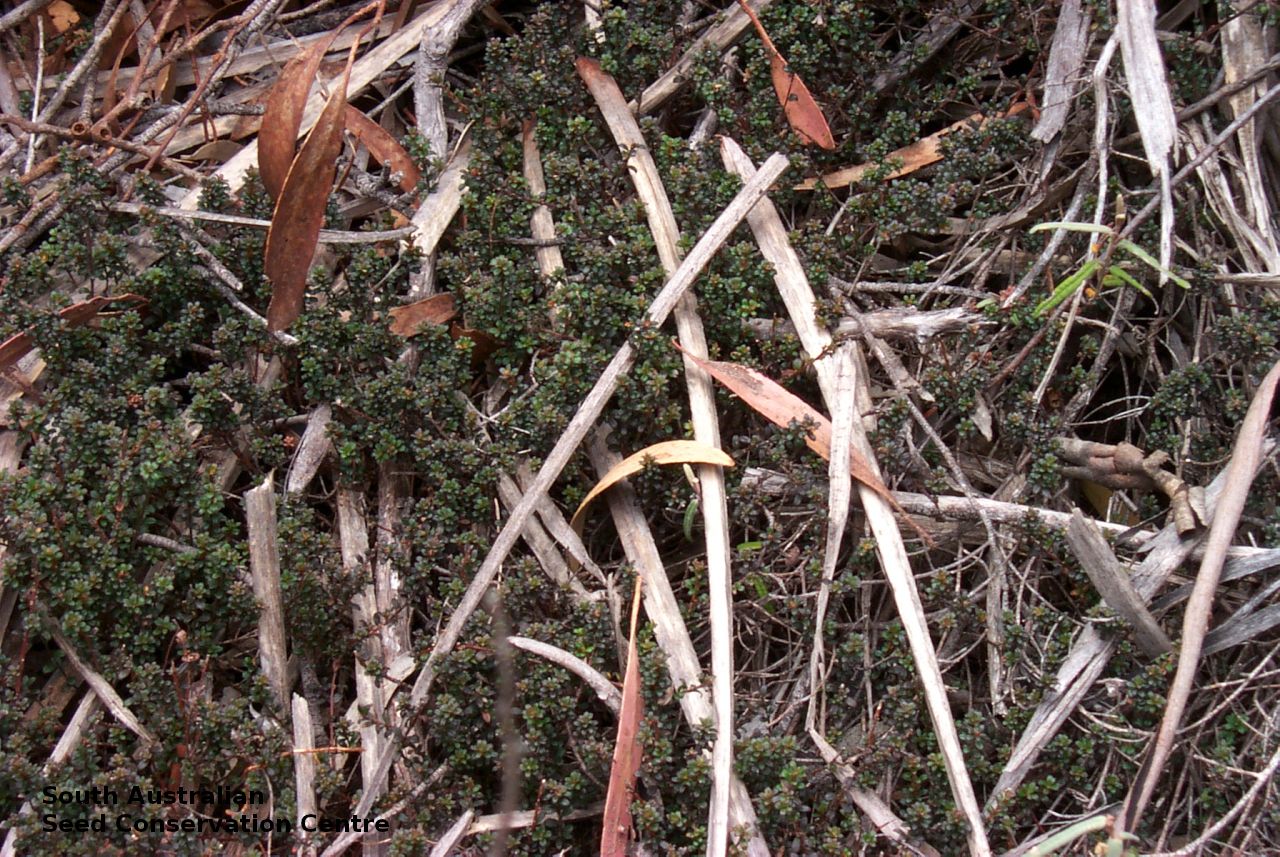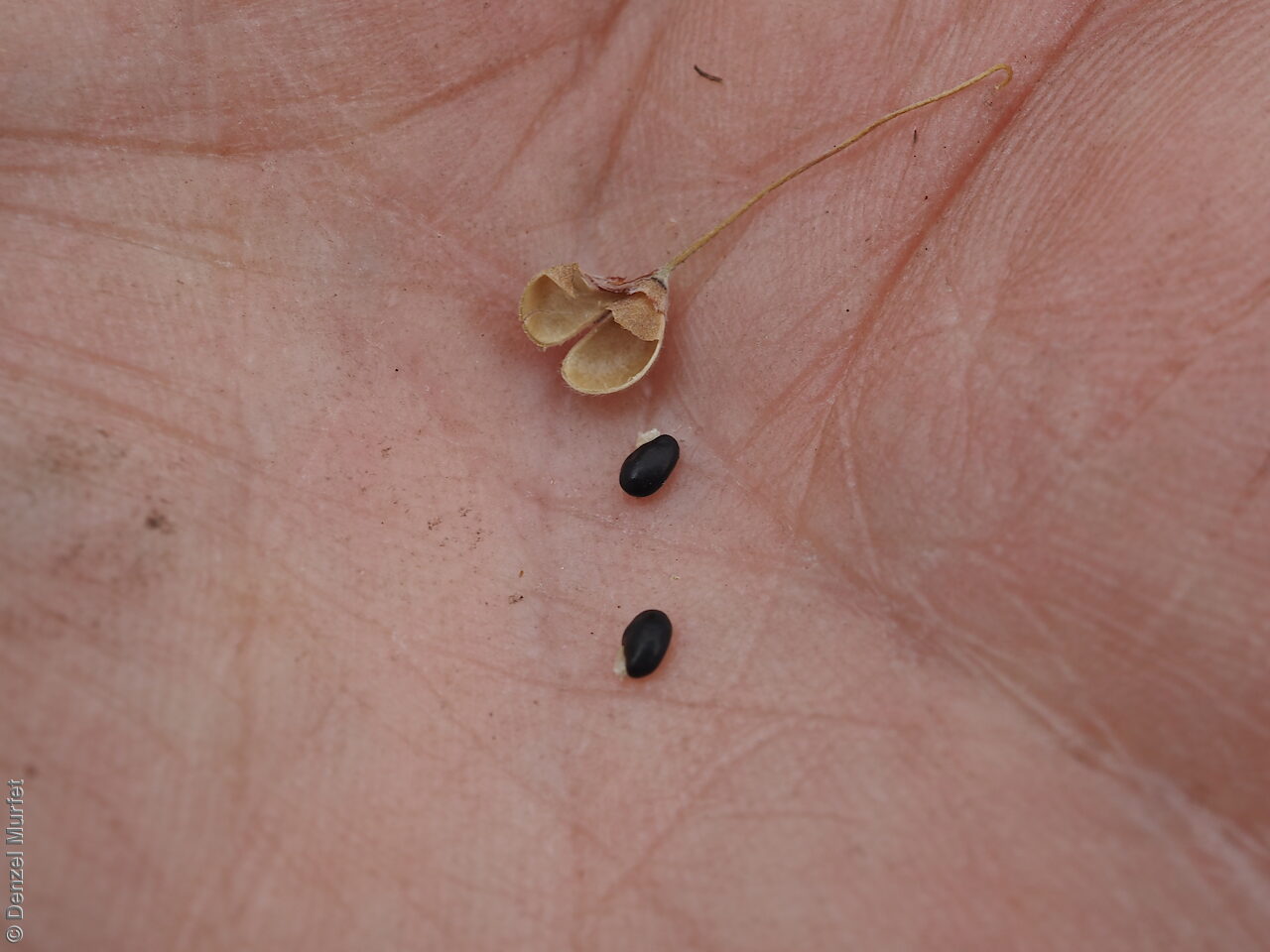












Botanical art
Etymology
Pultenaea named after Richard Pulteney (1730-1801), an English physician, botanist and biographer of Carl Linnaeus. Insularis from Latin meaning pertaining to or growing on islands; referring to the species occurring only on Kangaroo Island.
Distribution and status
Endemic to South Australia and found only on the eastern side of Kangaroo Island mainly in Beyeria Conservation Park, growing on sandy-clay soil in open forest of Eucalyptus and Melaleuca which has had several partial clearances. Native. Very rare in South Australia.
Herbarium region: Kangaroo Island
NRM region: Kangaroo Island
AVH map: SA distribution map (external link)
Plant description
Spreading to prostrate shrub to 60 cm high, rooting at nodes, with wiry branches that are green to reddish-brown, woody and hairy. Leaves elliptical, to 6 mm long and 3 mm wide, margin flat or recurved to revolute, with tip mucronate and recurved, green to dark-green, sometimes with a reddish tint, upper surface hairy. Inflorescence solitary yellow pea-flowers to 5 mm long mainly towards the apex of branches. This species is very similar to P. pedunculata which has larger flowers (to 8 mm long), longer narrow-lanceolate to narrow-elliptic leaves (12 mm x 3 mm) and nearly glabrous lamina ending in long-mucronate to an almost pungent straight tip. Flowering between October and December. Fruits are hairy flat brown ovoid pod to 4 mm long. Seeds ovoid dark brown to black, to 3 mm long and 2 mm wide. Seed embryo type is bent.
Seed collection and propagation
Collect seeds between November and January. Collect maturing pods, those that are brown or turning brown and contain hard seeds inside. Place the pods in a paper bag and leave to dry for one to two weeks. Then rub the pods with a rubber bung to dislodge the seeds. Use a sieve to separate the unwanted material. Store the seeds with a desiccant such as dried silica beads or dry rice, in an air tight container in a cool and dry place. This species has physical dormancy that needs to be overcome for the seed to germinate. The seed coat needs to be ruptured so that water can enter the seed before germination can occur. Methods to rupture the seed coat include scarification with sand paper or nicking the seed coat with a sharp blade or hot water treatment by immersion in boiling water.
Fire response
Obligate re-seeder, only tiny seedlings noted emerging in fire scars and no re-sprouting observed.
Longevity: >20 years
Time to flowering: 4 to 5 years
Recovery work
In 2020-2021 this species was assessed post-fire in 1 year and 2 year old fire scars. A total of 60 seeds have been collected & banked for two populations outside the 2020 fire scar. Further populations will be assessed and seeds collected on Kangaroo Island in 2021–2022. Germination screening testing the response to fire cues will be undertaken in 2021.This project was supported by the Garfield-Weston program.
| Location | No. of seeds (weight grams) | Number of plants | Date collected | Collection number Collection location | Date stored | % Viability | Storage temperature |
|---|---|---|---|---|---|---|---|
| BGA MSB | 1,457 (4.3 g) 1,457 (4.3 g) | 22 | 26-Jan-2004 | ERT3 Kangaroo Island | 1-Sep-2004 | +5°C, -18°C | |
| BGA | 420 (1.627 g) | 20+ | 7-Jan-2021 | M.J.Haby Kangaroo Island | 7-Jul-2022 | 92% | -18°C |
| BGA | 216 (0.535 g) | 20+ | 1-Feb-2022 | M.J.Haby Kangaroo Island | 7-Jul-2022 | 60% | -18°C |
Number of plants: This is the number of plants from which the seeds were collected.
Collection location: The Herbarium of South Australia's region name.
% Viability: Percentage of filled healthy seeds determined by a cut test or x-ray.